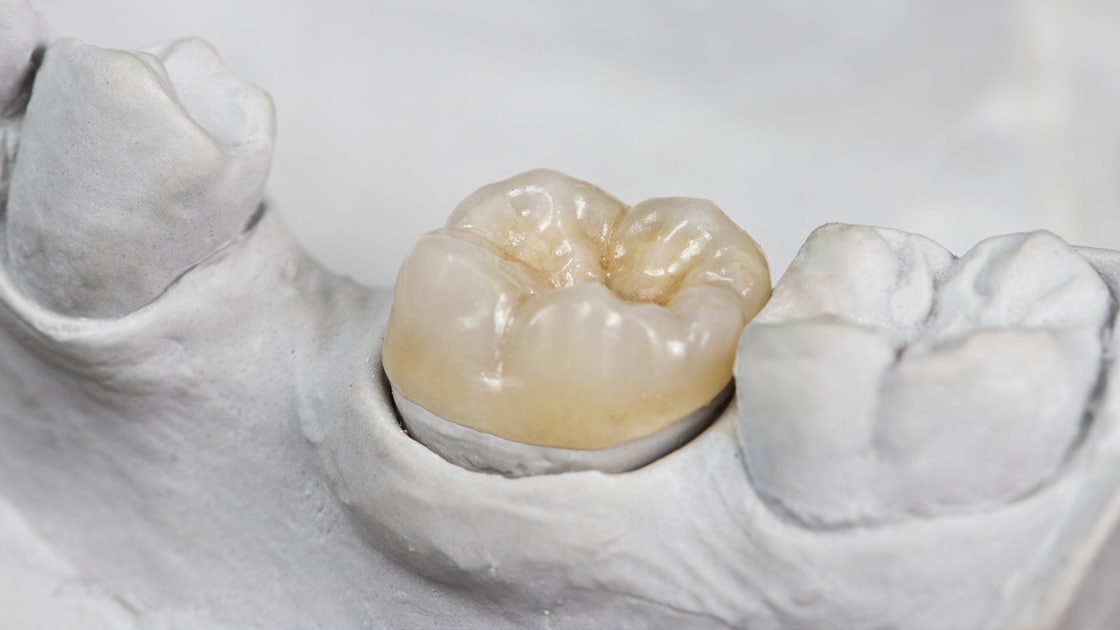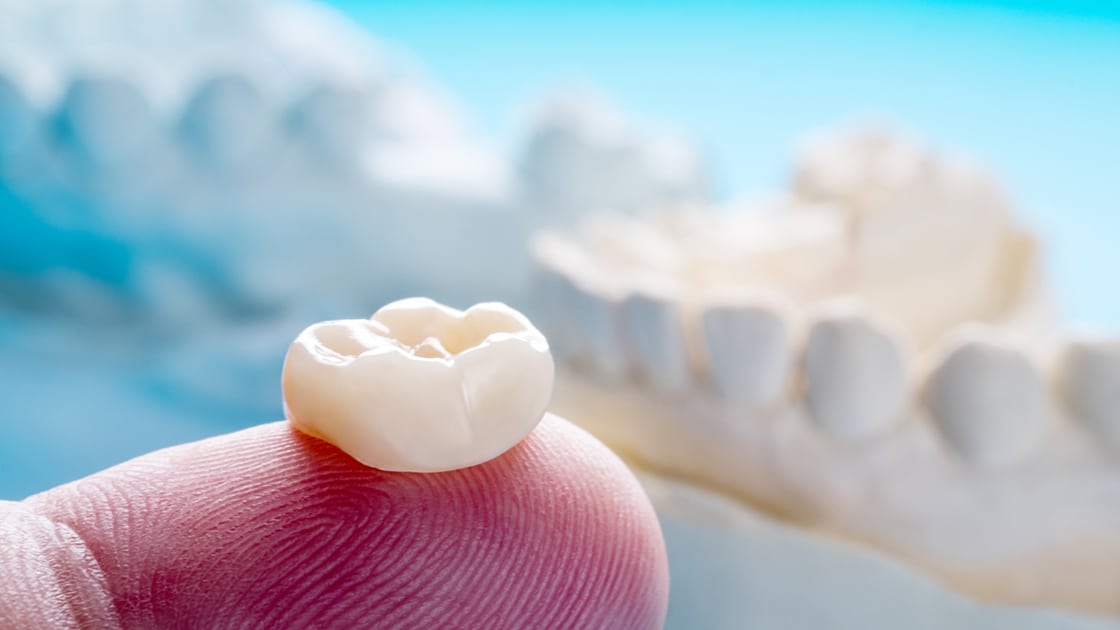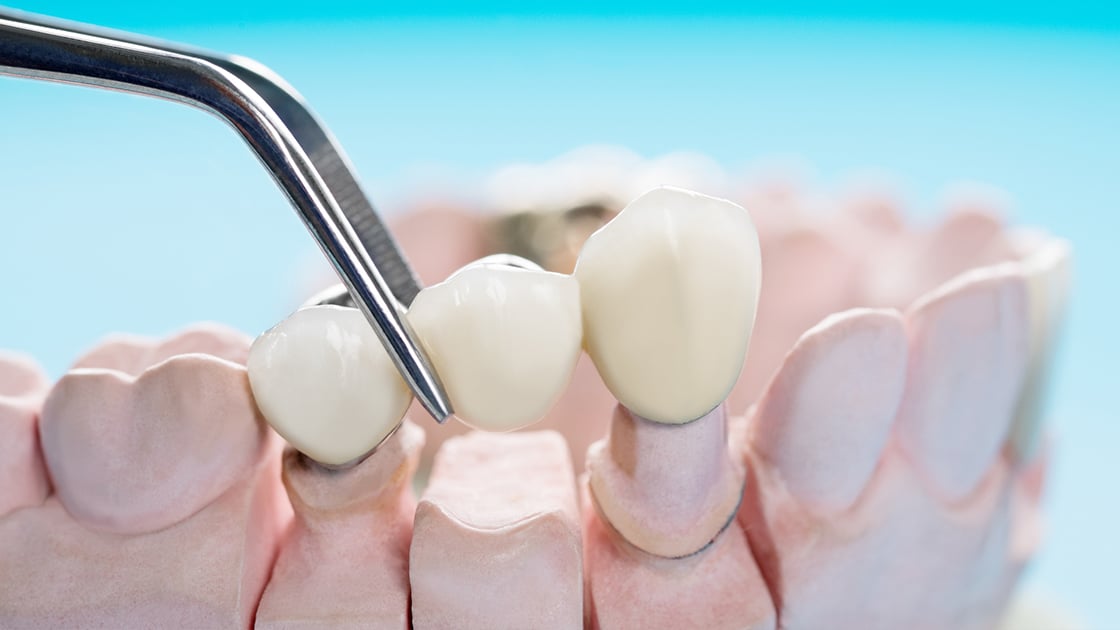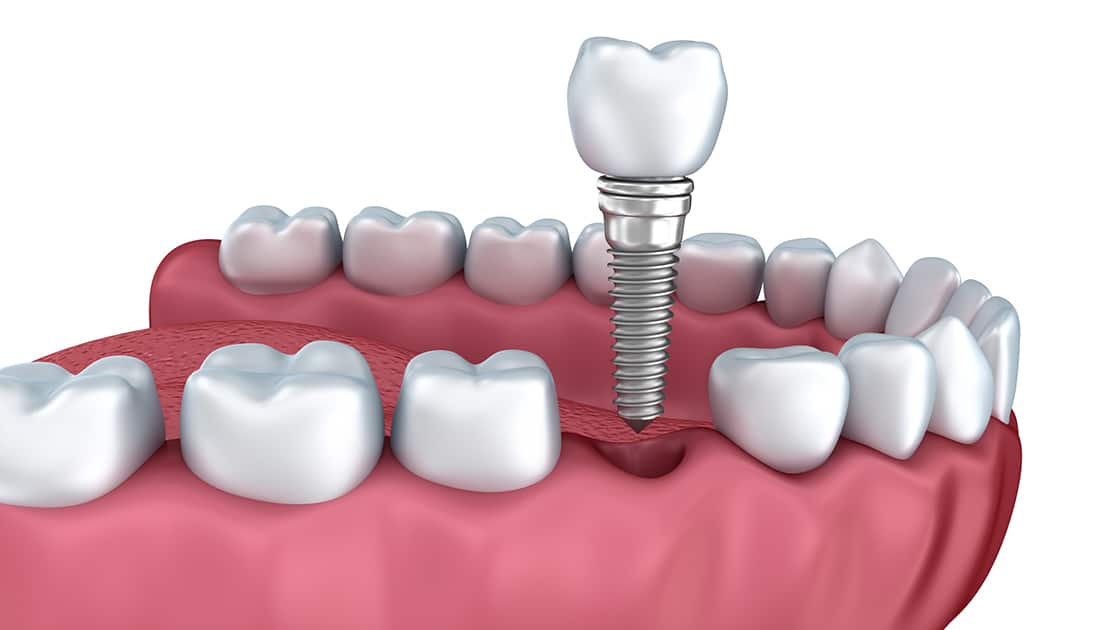
Restorative procedures help protect both oral health and overall health while improving the appearance of the patient’s smile. Being able to properly chew food and having correct bite alignment affect a patient's health in ways that go beyond just a smile.
The right restorative procedures at the right time can reduce the need for additional dental work in the future.
Composite Fillings

Inlays & Onlays

Dental Crowns

A crown is a dental restoration that completely covers the outside of a tooth that is cracked, broken, worn down, or severely decayed. Dental crowns are usually completed in two visits. During the first visit, the tooth is prepared (shaved down) and an impression is taken. A temporary crown is placed while the permanent crown is fabricated. During the second visit, the permanent crown is carefully fitted and then cemented into place.
Dental Bridges

A bridge can replace missing teeth without the use of a denture or dental implant. A bridge is composed of two crowns and a replacement tooth or teeth. Crowns are typically placed on the teeth on either side of the space, with the fabricated tooth or teeth attached in between.
For multiple missing teeth, an implant may be used to anchor the bridge.
Dental Implant Restorations

Dental implants replace missing teeth and protect existing teeth by helping to preserve bone structure. Dental implants are composed of three pieces: a small screw made of a biocompatible metal called titanium, an abutment that connects the screw, and the final restoration.
Dentures

A denture is a replacement for multiple missing teeth within the same (upper or lower) arch. A denture differs from a crown or bridge in that it does not rely on an existing tooth structure, and it completely replaces the missing teeth.
There are several different types of dentures:
- Full or Partial
- Removable or Fixed
- Traditional or Implant-Supported
Frequently Asked Questions About Restorative Dentistry
Can a broken tooth be fixed?
Generally, yes. Restorative dentistry involves many procedures and treatments that can address all types of cracks, fractures, chips, and the like - and return the tooth to its full functionality and a beautiful appearance. Unfortunately, a tooth that has been broken off at the gum line may not be able to be saved.
What happens if a missing tooth is not replaced?
Other than aesthetics, it may not feel like a big deal to leave an empty space where your tooth once was. But, it is. With support, your surrounding teeth can begin to shift, throwing off your bite alignment and more. Dental implants are a great way to replace a missing tooth with one that provides you with a natural appearance and full functionality.
Are tooth restorations painful?
No. A local anesthetic will be used to numb the area before the procedure begins. This will keep you from experiencing any pain during your restorative procedure. Once it wears off, you may feel some discomfort as you begin the healing process at home. But this is temporary and over-the-counter pain medicine can offer relief.
How long do dental crowns last?
It doesn’t matter how they are used - whether part of a dental implant or to restore a broken tooth - dental crowns last, on average, 10 to 15 years. Though with exceptional care, oral hygiene, and routine dental visits, dental crowns can last upwards of 20 years!
Will insurance cover restorative dentistry procedures?
Yes - usually. Most restorative dental procedures are viewed as necessary and are covered, at least in part. Though, all dental insurance policies will vary so you will want to determine your coverage.

